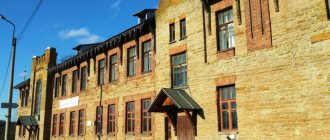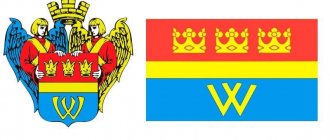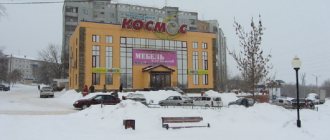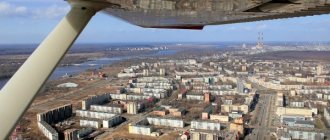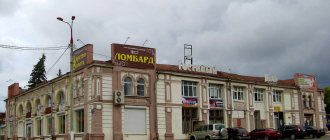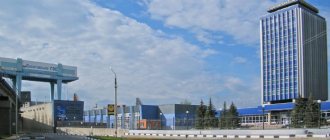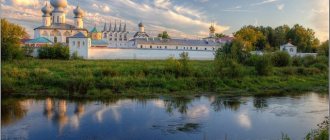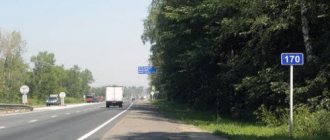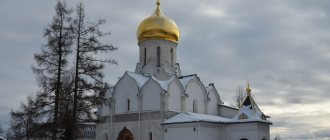Volkhov is a city in the Leningrad region, which arose thanks to the construction of the Volkhov hydroelectric power station, which was the first large hydroelectric power station in Russia, and then the construction of an aluminum smelter. In the 1920-1930s, the city attracted young people from all over the USSR.
During the Great Patriotic War, the Volkhov Front took place here, which played an important role in the liberation of Leningrad from the siege. And cargoes that were sent along the “road of life” passed through the Volkhov.
The city was restored after the war, and now retains the atmosphere of those times. It can be compared with European cities like Copenhagen, where there is no massive development, but there is a love of residents for their city, a desire to keep it in order. At the same time, the city has brand new kindergartens and playgrounds, and houses are painted in interesting colors.
What is it like to live in Volkhov in winter?
The average salary in the city is 37,792 rubles. You can rent a one-room or two-room apartment in the city for 15-20 thousand rubles.
For entertainment, there are cinemas (Portal and Sedoy Volkhov), restaurants (Red Cat, Eden, chain Sushi Shop). There are chain stores (like Pyaterochka and Magnit).
It is interesting to walk in the city, especially with children. In the center of the city there is a playground with many slides. In principle, there are good sites everywhere here.
Not all major cities have such sites.
There is a lot of space to walk.
Sports grounds.
Sport school.
Perhaps the definition of “family city” would even suit Volkhov.
A kindergarten that tries to combat children's frustration at having to go somewhere early in the morning in winter. In the dark it is at least visible, unlike the “classic” gray children's houses that make children and their parents sad.
And such views instantly take you back in time.
There is a place for the seals to warm up. There are many of them here. Better this than packs of stray dogs.
A good indicator is the cleanliness around trash cans.
The same hydroelectric power station that gave birth to the city itself.
Some night views of the city on New Year's Eve.
Smart city
In the spring, problems related to roads and utilities may arise in any city. Entire streets are flooded (like in Moscow during the rains in May and early June). In order to quickly collect complaints from citizens and, accordingly, solve problems, various platforms are used. In Moscow, for example, there is “Our City”; other cities use similar solutions. In addition, there are “State Services” through which you need to log in so that the complaint is displayed everywhere - in this case it simply cannot be ignored.
In Volkhov, an appeal on such topics can be written on the official website. An appeal received in this way is required by law to be considered; it is registered by the city administration.
Another way is to write about something on social networks. You can ask a question and get an answer, but this is a less effective means, although it is also related to the “smart city” approach. Still, first of all, it’s about “omnichannel and human-centricity,” as they like to say.
These disparate attempts should eventually turn into an end-to-end system of interaction between government, citizens and business. Last year, the head of the Volkhov district administration, Alexei Britsun, wrote on Instagram about the launch of an entire system: “Smart City,” thanks to the voice of the resident, monitors the quality of municipal services from housing and communal services and healthcare to landscaping, security, culture, tourism, etc. Time does not stand still, and now there are more and more opportunities to have feedback with city residents. This service is one of them. And thanks to this system, any resident can participate in the management of the city to make it better, more comfortable and safer.”
Accidents, of course, happen here too. The approach is correct: when on May 16, 125 apartment buildings and 25 private ones were left without water, they organized a supply of drinking water to the houses on the same day.
But there is another important area: the development of entrepreneurship. There is a business incubator in Volkhov, where they provide consultations on events for entrepreneurs and the self-employed, on renting commercial real estate, provide rental and loan benefits, information on supporting startups (for example, by the Entrepreneurship Support Fund), conduct business acceleration, and so on.
Bottom line
The city of Volkhov strives to become “smart” and is taking its first steps towards digitalization and improving interaction with citizens.
And the tradition of caring for buildings and the station. It retains the atmosphere of 60-80 years ago. What attracts those who want to make films about the history of the country.
And although problems appear in the form of garbage, one can hope that the utility services will solve them upon complaint. We will see the results later when we return to the city in the summer.
Tributaries
The Volkhov has 30 tributaries.
The main right tributaries are the Vishera, Pchevzha, Oskuya; left - Kerest, Tigoda, Olomna.
The length of Vishera is 64 km. The tributary flows into the Maly Volkhovets - the right branch of the Volkhov. The river is fed by peat bogs, so the water is bright brown.
Pchevzha carries water throughout the Novgorod and Leningrad regions. The length of the channel is 157 km. The width is up to 30 m. In the upper reaches the river is winding and narrow, and in the lower reaches it is deep and calm. Popular among rafting enthusiasts.
Oskuja is navigable. The length of the river is 114 km. Thanks to this river, the word “ushkuiniki” appeared, which in the distant past called Novgorod river robbers. They built their ships at the mouth of the Oskuya near Novgorod, and in the Novgorod dialect the name of the river sounded like Ushkuya.
Kerest flows from the swamps and flows into the Volkhov in the Chudovsky district. Its length is 100 km, its catchment area is 933 km².
Tigoda originates from the Tushinsky moss swamp. Length – 143 km, drainage area – 2290 km².
The Olomna flows through the Leningrad region. The length of the river is 52 km, the basin area is 420 km².
Light entertainment and relaxation
The best way to relax in Volkhov is at the sports complex or fishing, which the locals love. In summer you can swim in the river by visiting one of the public beaches. There is also a health resort in a picturesque area of the city overlooking the river. Numerous children's playgrounds are freely available for young tourists.
Industry
The Volkhov hydroelectric power station was founded in 1918 and launched in 1926-1927. This is one of the oldest hydroelectric power stations in Russia, a historical monument of science and technology. Now it produces 332 million kWh of electricity. Its capacity was initially 58 MW, and now it reaches 86 MW.
The construction of the hydroelectric power station also had a positive side effect - the reservoir flooded the Volkhov rapids, which ensured navigation along the Volkhov River.
During the war, the Volkhov hydroelectric power station helped break the “energy blockade” of Leningrad in September 1942, giving light to the city’s residents.
In addition, the hydroelectric power station provided energy supply to the aluminum plant, which produced the first domestic industrial aluminum in 1932. The Volkhov aluminum plant became the second most important enterprise, thanks to which the city appeared.
In 1959, it produced high-purity aluminum, then established complex processing of nepheline raw materials and ultra-pure aluminum.
It was the first such plant in the USSR, but at the same time it was a small plant. If in the 2000s, Russian factories in the Urals and Siberia produced 700-900 thousand tons of products, then the Volkhov enterprise produced only 20 thousand tons.
Now there are a number of enterprises in the city. PhosAgro is building a complex for the production of phosphorus-containing fertilizers on the basis of Metakhim for 23 billion rubles. Metakhim produces mineral fertilizers, sulfuric acid and other chemical products that are used in detergents, bleaches and disinfectants. Products are exported to Europe, Asia, South America and Africa.
The Volkhov feed mill produces animal feed; there is a fish processing plant in the city, as well as a fish hatchery that preserves aquatic biological resources.
Why are Volkhov filmed in films?
In Soviet cinema, the Volkhov hydroelectric power station played roles in propaganda films. For example, in the film “The Eleventh,” directed by Dziga Vertov, they filmed the station from a suspended cradle, located above the stream. Then an image of Lenin was superimposed on this frame.
The hydroelectric power station was featured in the 1979 film "Engineer Graftio". Heinrich Graftio is a Russian power engineer, specialist in railway electrification, builder of the first hydroelectric power stations in the USSR. In 1918-1919, he drew up estimates for Volkhovstroy and erected barracks, warehouses and other structures for workers. His role was played by Anatoly Papanov.
The city station - pre-war - was shown in the 1972 film "Memories of Courage" - newsreels of the war years were used. The photo below shows Volkhov Station now. The building was built after the war, but is maintained in perfect condition.
In 2005, Alexey Uchitel filmed the film “Space as a Premonition” in Volkhov; local residents also took part in the filming as extras. In the film “Jewish Happiness,” the main character visits the small town where he spent his childhood for one day. In order to convey this atmosphere of kindness and comfort, the film was shot in Volkhov. The 2022 film “Once upon a time” was filmed on Molodezhnaya Street and in house number 34 on Aviatsionnaya.
Many feature films shot in Volkhov are united by the need to show a historically accurate city of the past. The fact is that Volkhov, like, for example, Copenhagen, Barcelona, Amsterdam and some other European cities, takes care of what the city has: houses, streets, a train station, architecture - even if they are houses built in the 20th century. In Volkhov you can easily show, for example, the 1950s, but as soon as you move the camera to the side, you will stumble upon a new playground or shopping center.
